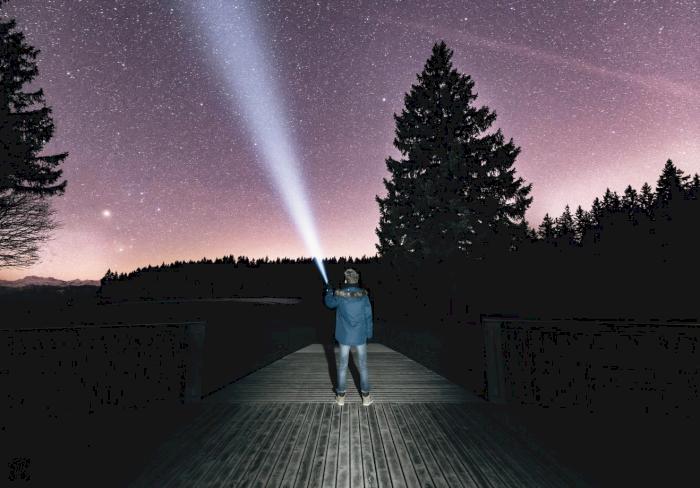Cartesian Diver
- Friday July 10 2020
- General SCI
The "Cartesian Diver" is a classic science experiment that demonstrates the principle of buoyancy. Here's how you can try it at home!
Materials
- Bottle with cap
- Water
- Eye dropper (or ketchup packet)
- Pitcher
Setup
- Fill the bottle nearly to the top with water.
- Fill the pitcher with water.
- Use the water in the pitcher to fill the eye-dropper. Slowly fill the eye dropper with water until there is enough for it to float just below the surface of the water.
- Place the eye dropper in the bottle, and screw on its cap.
- Squeeze the bottle, and observe what happens to the diver.
The Science
So why does the eye dropper fall to the bottom of the bottle when it's squeezed?
This experiment demonstrates how density is related to buoyancy, which describes how a liquid will push an object upwards. If the object submerged in the liquid is light enough, the liquid will push that object up. If the object is too heavy for the liquid to push it upward, it will sink.
Can you think of anything that can float in water? These things are buoyant!
Can you think of anything that sinks in water? Those things are negatively buoyant!
As the bottle is squeezed, the pressure inside it increases. As the pressure goes up, the liquid in the bottle pushes harder against the walls of the bottle and all the other molecules in the bottle.
You might have noticed that the air bubble inside the eyedropper gets smaller as the bottle gets squeezed. This happens because the increase of pressure on the liquid inside the bottle is compresses the air in the diver.
As that air becomes compressed, it becomes denser and too heavy for the water to keep it at the top of the liquid! It becomes negatively buoyant and sinks to the bottom on the bottle.
When you stop squeezing on the bottle, the pressure decreases. The air bubble inside the eyedropper expands and becomes less dense. It becomes buoyant again and floats to the top!

